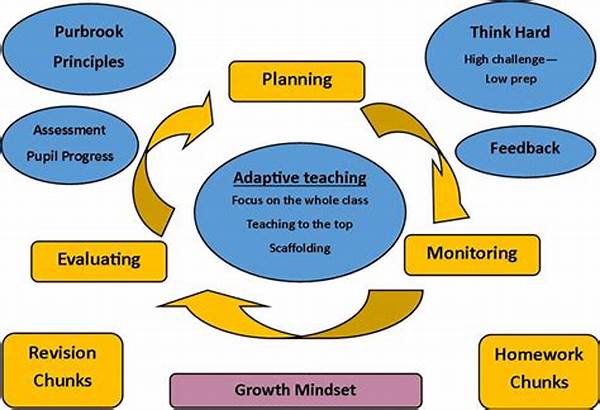In the ever-evolving landscape of global education, the importance of adapting educational content for diverse needs has never been more pronounced. As educational institutions confront a diverse array of cultural, linguistic, and cognitive backgrounds, the need to customize learning materials to suit these varying requirements is crucial to ensuring an inclusive learning environment. This process involves a thoughtful examination of current educational materials and the subsequent transformation of those materials to ensure accessibility and equity for all learners, regardless of their backgrounds or abilities.
Read Now : Remote Leadership Development Courses
Understanding Diverse Educational Needs
Adapting educational content for diverse needs requires a multifaceted approach. Educators must first comprehend the distinct requirements of their student population, which includes recognizing cultural differences, language barriers, and varying learning styles. By utilizing a blend of qualitative and quantitative assessments, educational institutions can better identify these needs and shape their curriculums accordingly. Employing differentiated instruction techniques stands as a cornerstone in this endeavor, as it allows educators to offer various pathways to learning, catering to the unique strengths and challenges of each student. This intricate task is not solely the responsibility of educators but requires a concerted effort from curriculum developers, educational policymakers, and the students themselves to successfully implement changes that foster an inclusive learning atmosphere. The process of adapting educational content for diverse needs thus demands a collaborative, informed, and sensitive approach to transform traditional education into one that is truly inclusive and equitable.
Strategies for Implementation
1. Cultural Relevance: Incorporating culturally relevant material is essential when adapting educational content for diverse needs, enabling students to see their own experiences reflected in their learning.
2. Language Support: Providing multilingual resources bridges the gap for non-native speakers, ensuring that language barriers do not impede the learning process.
3. Technology Integration: Leveraging technology to customize learning experiences enhances accessibility for students with varying learning needs.
4. Flexible Learning Environments: Creating spaces that accommodate different learning styles and needs is pivotal in supporting diverse student populations.
5. Regular Feedback: Continuous assessment and feedback from students are critical to refining educational methodologies, ensuring that they remain relevant and effective.
Read Now : Practical Weekend Workshops For Students
The Role of Technology in Customization
The advent of technology has revolutionized the ability to meet diverse educational needs. By utilizing digital platforms and tools, educators have the opportunity to provide personalized learning experiences that were previously unattainable. Through online learning modules, interactive exercises, and adaptive learning software, educators can tailor content to address the unique needs of each student. Furthermore, the use of digital assessments allows for real-time feedback and adjustments, fostering an educational environment that is responsive and dynamic. This technological integration is pivotal in adapting educational content for diverse needs, as it democratizes access to resources and creates avenues for innovative instructional methods. The inherent flexibility of technology thus serves as a powerful tool in the pursuit of an inclusive education system.
Challenges in Adapting Educational Content
While the benefits of adapting educational content for diverse needs are significant, challenges persist. One predominant obstacle is the resistance to change within educational institutions, often rooted in traditional pedagogical norms. Additionally, the financial and logistical hurdles of implementing new programs and resources can be daunting. Educators also face the complex task of balancing diverse needs within a single classroom setting, which requires significant expertise and adaptability. Another challenge is maintaining the quality and rigor of educational content while ensuring it is accessible to all students. Ultimately, overcoming these challenges requires robust support systems, collaborative partnerships, and an unwavering commitment to educational equity.
Educator Training and Development
To effectively address the needs of diverse student populations, comprehensive educator training and development are imperative. Training programs must focus on cultural competency, differentiated instruction, and the integration of technology into the classroom. By equipping educators with the skills necessary to adapt educational content for diverse needs, institutions ensure that they are prepared to deliver inclusive and effective education. Professional development opportunities should be ongoing, providing educators with the latest strategies and tools to address the ever-changing landscape of student needs. Additionally, fostering a community of practice among educators can encourage the sharing of successful approaches and insights, further enriching the educational experience for both teachers and their students.
Summary and Future Directions
In conclusion, adapting educational content for diverse needs is a dynamic and ongoing process that requires a concerted effort from all stakeholders within the educational landscape. As we look to the future, it is essential to continue developing innovative strategies that incorporate cultural relevance, technology integration, and flexible learning environments. Collaboration between educators, curriculum developers, and policymakers is key to creating an equitable education system that meets the needs of every student. By prioritizing this endeavor, we move closer to realizing a future where education is accessible to all, and where every student has the opportunity to succeed, regardless of their background or abilities. As educational paradigms continue to shift, the commitment to adapting educational content for diverse needs will remain a cornerstone in the pursuit of educational excellence and equity.
